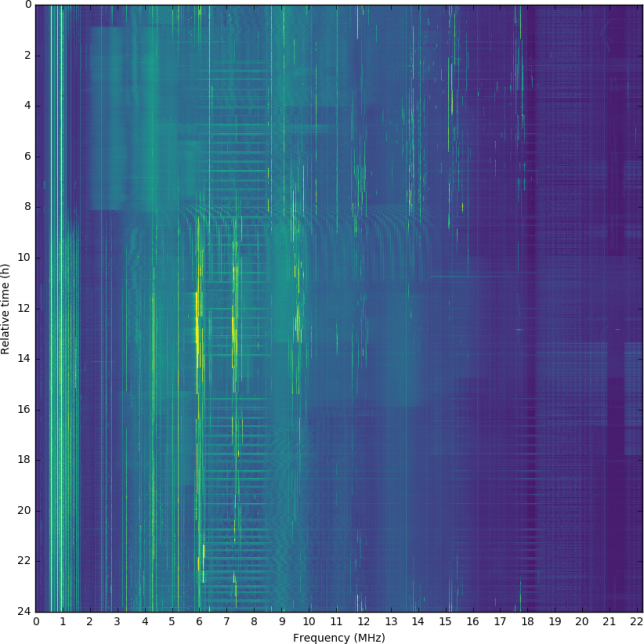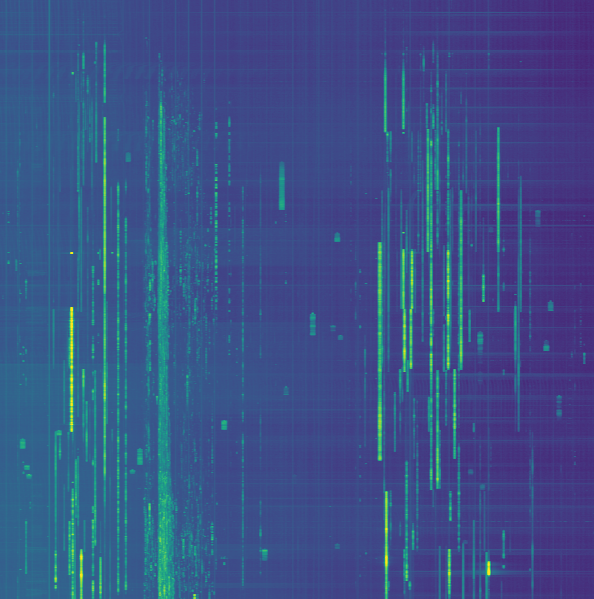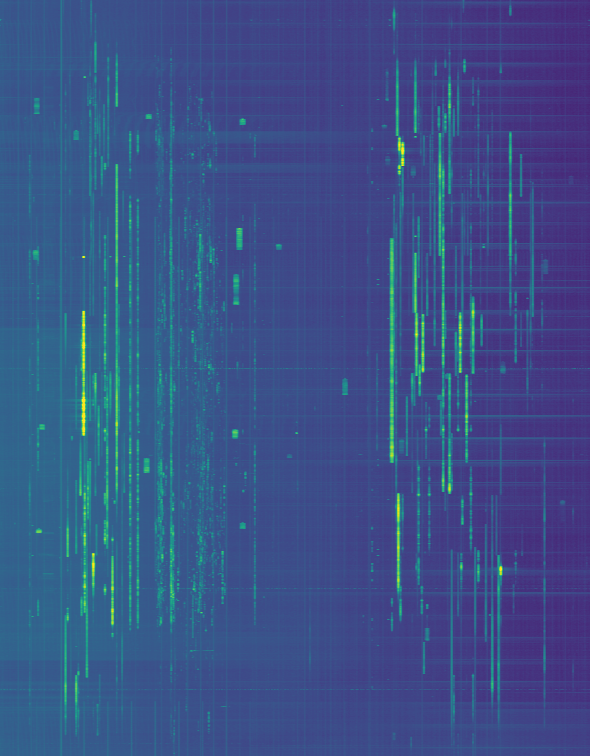A few weeks ago I posted how I make wideband recordings of bandscope data with my Hermes-Lite 2. In that post, I sort of promised to do a small analysis of the waterfall I showed. After being busy with other things (PicSat’s launch among them), I’ve finally had time to write something up.
The original waterfall can be seen below. It contains 5 days of data from 0 to 38.4MHz.

Most of the patterns repeat every day in the same way, as ionospheric propagation is affected by the daylight cycle. I have extracted a complete day, starting around local sunrise. I have labelled the frequency and time axes for easy reference. I have also cropped the frequency to between 0 and 22MHz, since not much happens above 22MHz.

The most noticeable daytime/nighttime pattern happens in the MF broadcast band (between 500 and 1600kHz approximately). At daytime, a few local AM stations can be heard via groundwave. At nighttime, many distant AM stations can be heard via skywave. The effect is very noticeable between 1000 and 1600kHz, since the highest local station is at 999kHz. At this time of the year, days are quite short, lasting a bit more than 8 hours. The keen eye will also spot some AM stations in the LF band at night, and none during the day.
The HF bands also show great differences between daytime and nighttime. At night, the 49m, 41m and 31m broadcast bands and the 80m Amateur band can be heard. During the day, the 25m, 22m, 19m and 16m broadcast bands and the 20m Amateur band are heard. The 40m Amateur band can be heard both during the day and night. However, during the day we hear stations from Spain, and during the night we hear mainly stations from other European countries.
This behaviour is more or less expected by anyone familiar with ionospheric propagation. Another more interesting thing that can be seen in this waterfall is man-made interference and its patterns. For instance, note that there is some form of interference between 2 and 7MHz. This is present during the day, but absent at night. However, if you look again at the first waterfall, you can see that it follows an irregular pattern. It is always present at daytime, but two of the days it’s also present for some hours at night. I have no idea what causes this interference. Most likely it is something local.
Another interesting detail is the 20m Amateur band on the last day of the recording, Sunday January 7th. This can be seen below, between the AM stations of the 22m and 19m bands. It seem that there is heavy RTTY activity. Most likely this is due to the ARRL RTTY Roundup contest.

For comparison, this was the 20m band on Saturday 6th.

Vy nice description of the spectrum and it’s daily changes. Fascinating to see. Thanks! 73